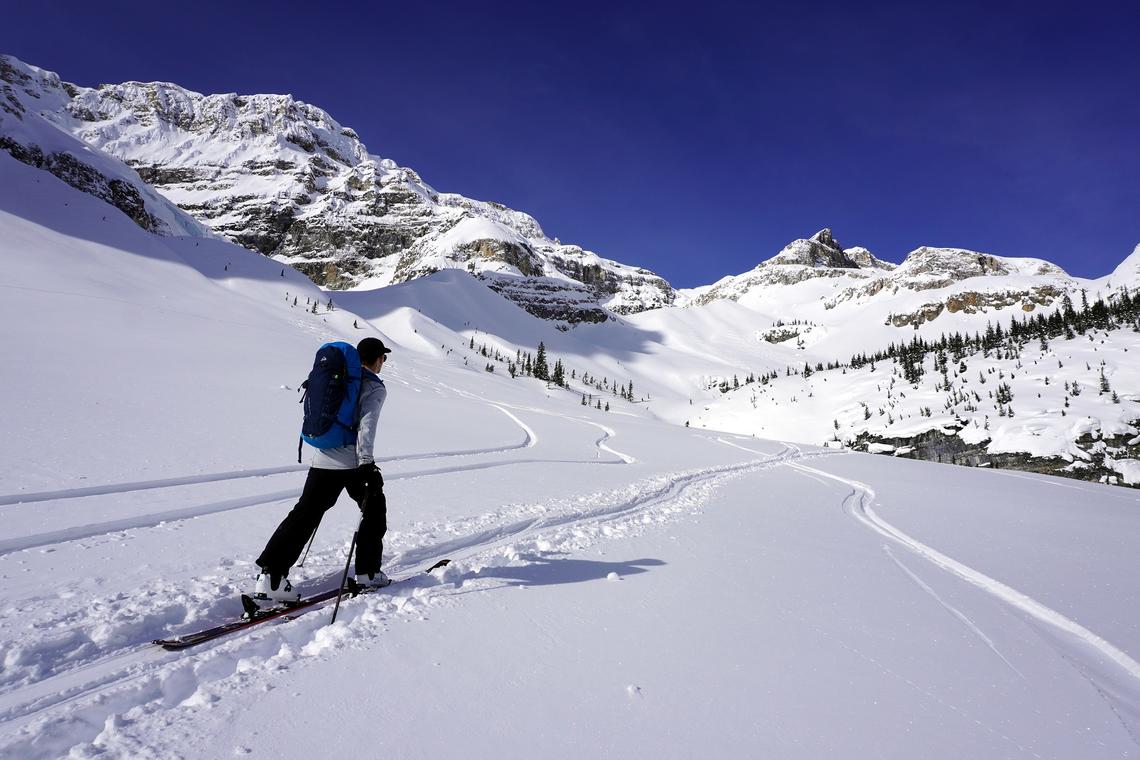
Jan. 12, 2023
UCalgary Outdoor Centre offers tips to minimize travel risk in wake of backcountry avalanche warnings
The snowpack in western Canada is extremely weak this year and these dangerous conditions are expected to persist for the rest of the season.
“It is important for any outdoor enthusiast heading into the backcountry to understand why these conditions exist and how to minimize the risk,” says Paul Chiddle, manager of the University Calgary Outdoor Centre, and a mountain guide qualified by the International Federation of Mountain Guides Association.
Why these conditions exist
The snowpack in western Canada has been affected by a lack of snow and cold weather, leading to the formation of weak layers that are prone to triggering large, dangerous avalanches. These weak layers are buried deep enough that there are few signs of instability, making them difficult to detect.
Many avalanches this winter have been triggered from a distance, indicating that the weak layers in the snowpack are widespread, interconnected, and unstable. These layers, particularly in wind-affected areas and rocky terrain, are more likely to be triggered when they are shallowly buried.
“This year’s snowpack is different from most previous years,” writes Mike Conlan, an avalanche forecaster, on the Avalanche Canada website. “Professionals with decades of experience suggest this weak of a snowpack is only seen once every 10 to 20 years for much of western Canada. Some professionals are comparing this snowpack to 2003, which was one of the worst years on record for avalanche fatalities.”

A skier wearing a backpack travels conservative backcountry terrain.
Paul Chiddle, Outdoor Centre
“An avalanche triggered on these layers is likely to be large to very large in size and could be fatal for those caught in it,” adds Chiddle, a 21-year veteran of backcountry guiding.
Manage the risk
The best way to manage the risk of avalanches is through conservative terrain choice. Avoid high-consequence terrain at all costs and, where possible, travel on slopes with a slope angle of less than 30 degrees while remaining vigilant of the terrain above and below you.
“It is extremely important to be cautious and continue with this mindset even during periods of reduced or no avalanche activity,” says Chiddle.
Important tips to planning for travel in the backcountry
- Assess the risk: Before heading out to the backcountry, assess the risk and gather as much information as possible about the current conditions, including the avalanche forecast, snowpack and weather, and terrain and group abilities and experience. See the Avalanche Canada forecast map for condition updates.
- Make a plan: Based on your risk assessment, come up with a plan for how to safely travel through the terrain. This might involve choosing a different route or altering your plans altogether.
- Implement safe travel techniques: Use safe travel techniques such as spacing out, traveling one at a time and being aware of your surroundings to reduce the risk of being caught in an avalanche.
- Continuously reassess the risk: Conditions can change quickly, so it is important to continuously reassess the risk and adjust your plans as needed.
- Be prepared for emergencies: Carry necessary emergency equipment, such as shovels, probes, and transceivers, and know how to use them in case of an avalanche. Have a plan in place for what to do in the event of an avalanche, including how to perform a rescue and get help if needed.
- Consider more training: Whether you are new to or experienced in backcountry travel. This will provide valuable knowledge and skills to safely navigate terrain and reduce the risk of an avalanche. Be prepared for travel in avalanche terrain by taking necessary precautions. Browse avalanche skills training at the Outdoor Centre.
The Outdoor Centre has been renting gear and delivering outdoor programs at the University of Calgary for more than 45 years. We offer a large range of programs and rentals to outdoor lovers both on and off campus. Learn more here.





